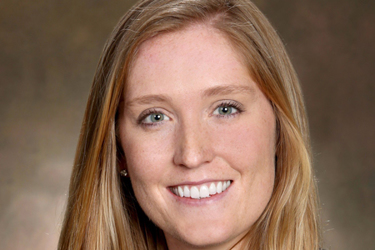Q&A: A Pathway To Sustainability And Social Impact

By Joe Cogliano

Sustainability has long been a focus for Xylem, but last year those efforts went into overdrive when the global water technology company introduced an ambitious set of goals for 2025. That list included reducing non-revenue water by 3.5 billion cubic meters and providing access to clean water and sanitation solutions for at least 20 million people living at the base of the global economic pyramid. Over the summer, Xylem successfully closed on its inaugural $1 billion green bond offering.
Austin Alexander, who spent the last eight years at Xylem, will be playing a big role in those efforts since her recent promotion to Vice President of Sustainability and Social Impact.
Water Online spoke with Alexander about the importance of innovation in sustainability and how she is one of the few people you’ll probably ever meet who had early aspirations for a career in wastewater.
It sounds like your interest in water and sustainability go way back?
Definitely. I had some unique opportunities growing up to see how important access to sanitation and safe drinking water is to every aspect of life — not just the human impact, but the environmental impact as well. For me, it was interesting to see how value is created with the simple act of treating wastewater. After touring a wastewater treatment plant in college, I said ‘this is what I want to do’ and started looking for companies in that space. Xylem fit the bill. I love wastewater. I love the whole process. So I am living the dream working for a water company.
With the growing realization that climate change is a threat to global resources, sustainability is beginning to play a key role in every industry. How can the water industry set an example for everyone else?
Water touches all pieces of climate change in some way or another. The water industry can help communities be more resilient to things like rising sea levels and extreme weather events — all those things we’re unfortunately becoming very familiar with — and address the scarcity of water, both for people in very water-scarce areas or places where scarcity was traditionally not an issue but is now becoming so. Water is such a great industry to be in just because of what we do every day. By ‘we’, I mean not just Xylem, but our customers, utility partners, engineering partners, and everyone else in this water ecosystem.
How is innovation a pathway to sustainability in water, and what types of technology are leading the way?
For us, it starts with data. The better you can measure something and see the data around it, the better the decisions you can make. We’re doing that with a few technologies that we’ve acquired through our digital solutions platform. Sensors also play a big part in our digital solutions. Really, anything around remote sensing and automated operations. Pre-2020, those were already trending in the market as utilities realized the opportunities available, and 2020 has only accelerated that with COVID-19 and the impact we’ve seen it have on the workforce. This digital transformation of water networks we see today will only continue to accelerate.
What things are helping to drive innovation at Xylem?
Through unique partnerships in some emerging markets across the world, we’re really learning so much, and that’s helping drive advancements. In many of these areas, they’re getting water and wastewater infrastructure in a real, meaningful way for the first time.
Are there any examples you can point to?
India is doing exactly that. With their Smart Cities initiative, they’re leapfrogging to the front of what is the best of the best technologies that are available and starting there. It’s really cool to watch. Frankly, I think we’ll probably continue to see some of the greatest innovations come from emerging markets.
Where has there been notable progress in addressing sustainability?
One of the big areas where we’re seeing advancement is affordability. One of our new technologies, the BLU-X analytics tool, can be added to your sewer system to assess the inflow and distribution to make smarter decisions using your existing sewage network versus what has been the more traditional route of capital-intensive infrastructure improvements. Grand Rapids [Michigan] is a good example. When they were initially looking at the challenges they faced, it was going to cost nearly $1 billion [to address]. With the installation of our BLU-X technology, they were able to make some smaller, more nuanced changes and get the same results for about $50 million. Not only did that free up capital to go into other infrastructure investments, but it also had a real meaningful social impact on the residents of Grand Rapids by addressing affordability.
Why is affordability such a big deal?
For so many people globally, and even in the U.S., water can end up taking a significant piece of their disposable income, particularly at the lowest income levels of society. How can we make that more affordable for them, as well as the utilities that are serving them, so they can make investments in other parts of the utility? That’s so important.
